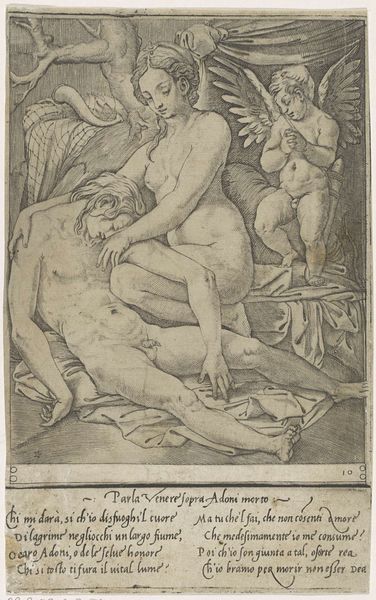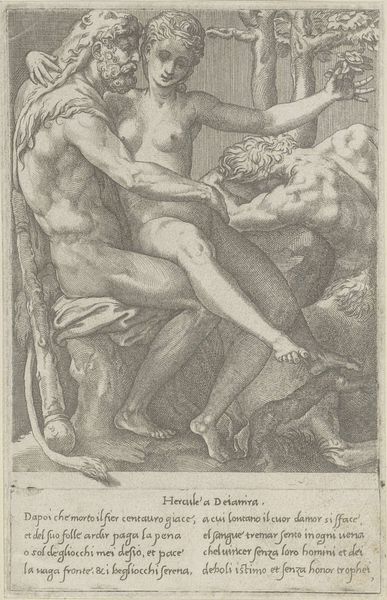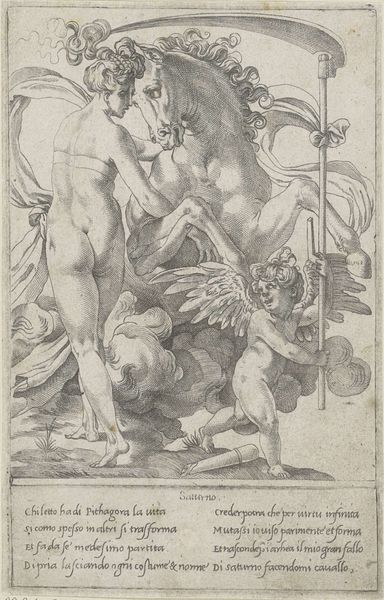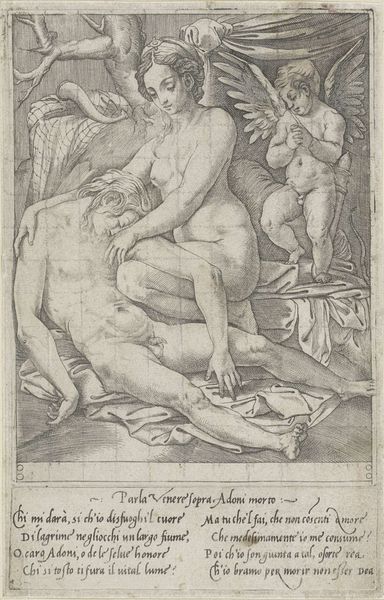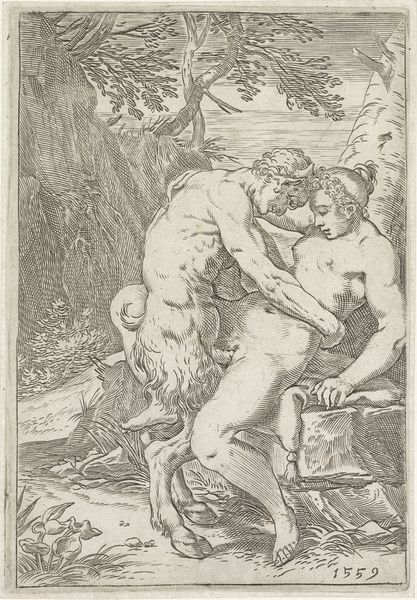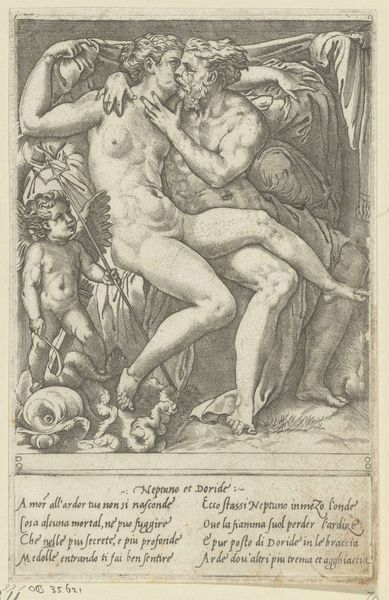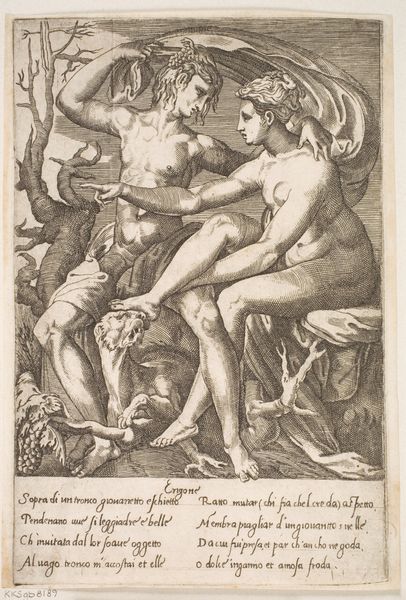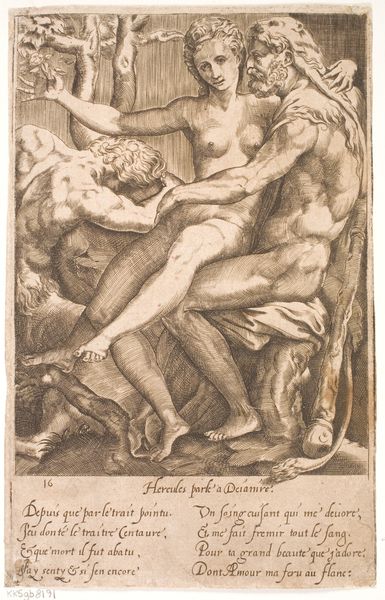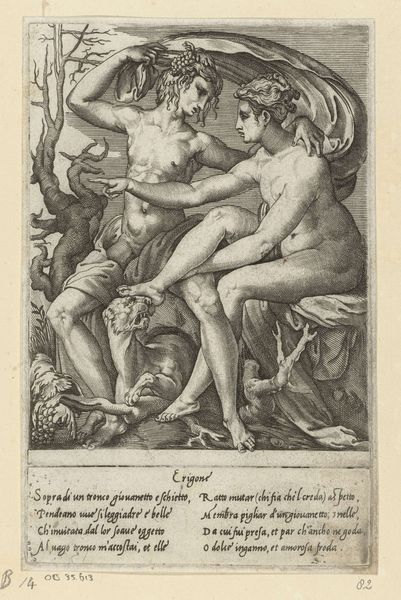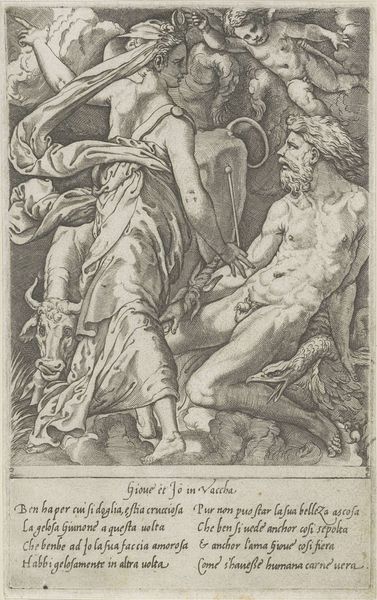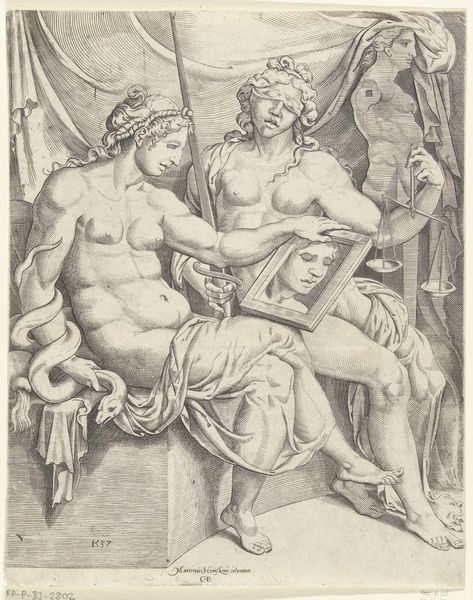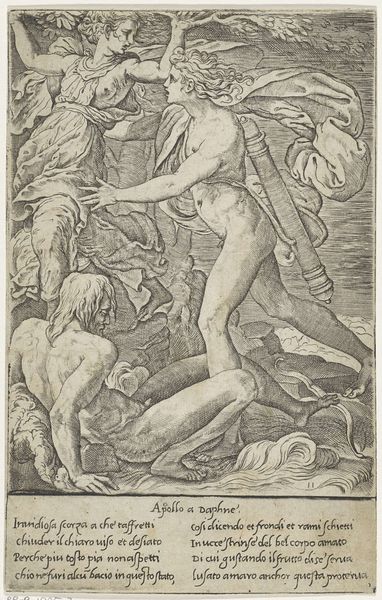
print, intaglio, engraving
# print
#
intaglio
#
mannerism
#
figuration
#
history-painting
#
italian-renaissance
#
nude
#
engraving
Dimensions: height 210 mm, width 136 mm
Copyright: Rijks Museum: Open Domain
Curator: Let's turn our attention to "Loves of the Gods," an engraving made sometime between 1515 and 1565. This Italian Renaissance intaglio print is currently held here at the Rijksmuseum. What are your immediate impressions? Editor: Stark. Striking contrasts. The figures, the background – everything is so linear. The sharp delineation of light and shadow really directs my eye. The composition almost feels restless, as if the figures are captured mid-motion. Curator: I agree. Understanding its creation helps us delve into those very sensations. Created by Giovanni Jacopo Caraglio, a crucial figure in disseminating Renaissance ideals, the print is based on a drawing by Perino del Vaga. In "Loves of the Gods," Caraglio wasn't merely reproducing an image; he was translating complex ideas about sexuality, power, and the human body into a portable, reproducible form. Editor: So, this is more than just aesthetic exercise. The use of engraving really emphasizes that sense of line I initially felt. Looking at their forms – that idealization, the contrapposto stance. There's a classical root there. Curator: Absolutely. But more than a stylistic quotation, consider what it meant to represent such stories so publicly. The overt display of sensuality and power between the deities… remember the era. What’s considered divine or beautiful then certainly wouldn't be regarded as politically or morally neutral. These prints found themselves in a lot of personal collections where interpretation really started. Editor: So, not only is the artist portraying classical subjects, but he is actively reinterpreting or maybe reclaiming narratives of desire. Are we looking at this portrayal and should we consider who benefits? Curator: Exactly. The figures' vulnerability—exacerbated by the unforgiving linear structure—it also asks critical questions. Questions of agency, spectatorship. Considering whose gaze they were constructed for helps dismantle a myth of objective artistic mastery. Editor: It strikes me how even in a small work on paper, such complex theoretical questions take hold through something as ostensibly basic as a line.
Comments
No comments
Be the first to comment and join the conversation on the ultimate creative platform.
